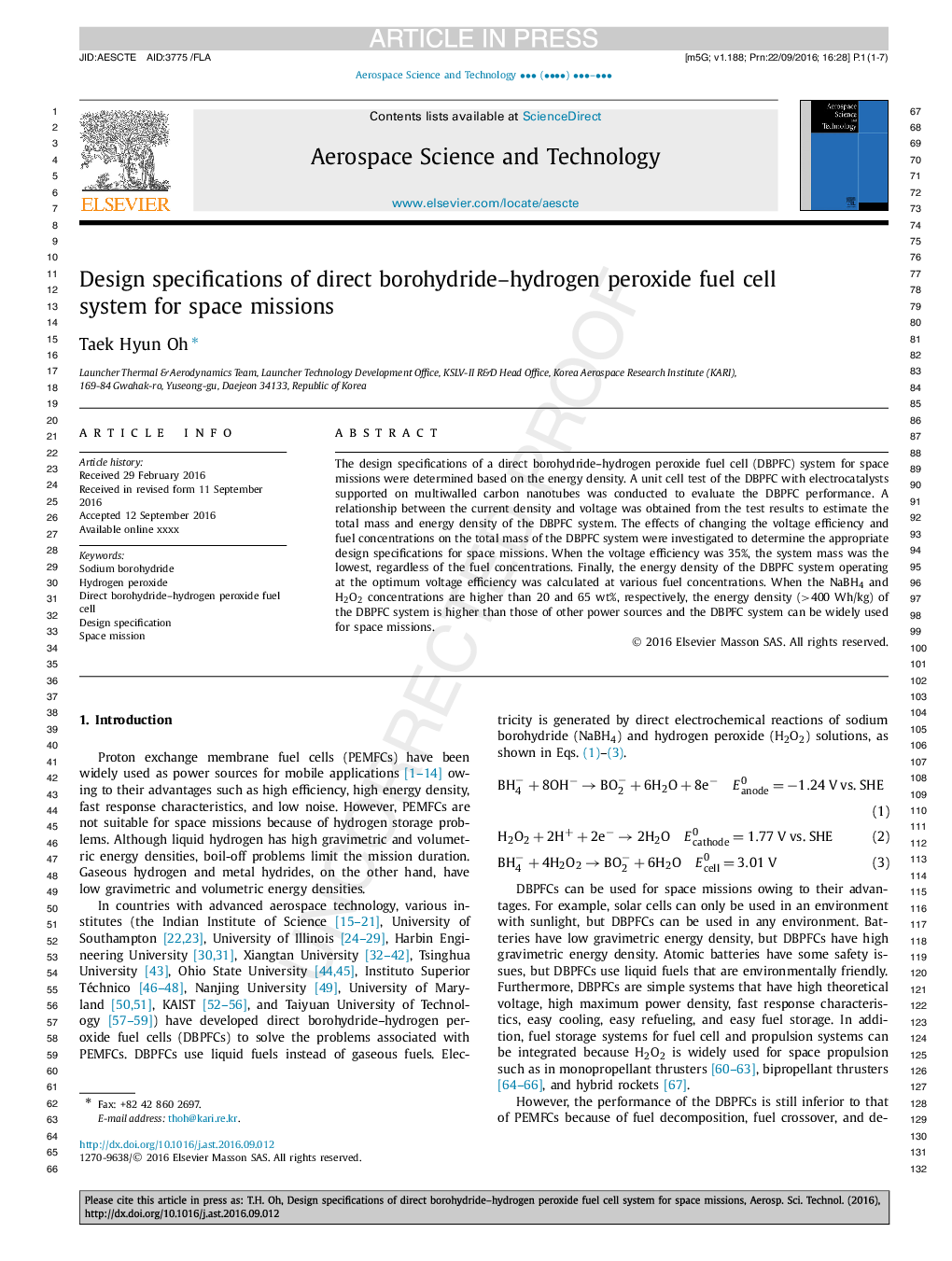| Article ID | Journal | Published Year | Pages | File Type |
|---|---|---|---|---|
| 8058509 | Aerospace Science and Technology | 2016 | 7 Pages |
Abstract
The design specifications of a direct borohydride-hydrogen peroxide fuel cell (DBPFC) system for space missions were determined based on the energy density. A unit cell test of the DBPFC with electrocatalysts supported on multiwalled carbon nanotubes was conducted to evaluate the DBPFC performance. A relationship between the current density and voltage was obtained from the test results to estimate the total mass and energy density of the DBPFC system. The effects of changing the voltage efficiency and fuel concentrations on the total mass of the DBPFC system were investigated to determine the appropriate design specifications for space missions. When the voltage efficiency was 35%, the system mass was the lowest, regardless of the fuel concentrations. Finally, the energy density of the DBPFC system operating at the optimum voltage efficiency was calculated at various fuel concentrations. When the NaBH4 and H2O2 concentrations are higher than 20 and 65 wt%, respectively, the energy density (>400 Wh/kg) of the DBPFC system is higher than those of other power sources and the DBPFC system can be widely used for space missions.
Related Topics
Physical Sciences and Engineering
Engineering
Aerospace Engineering
Authors
Taek Hyun Oh,
